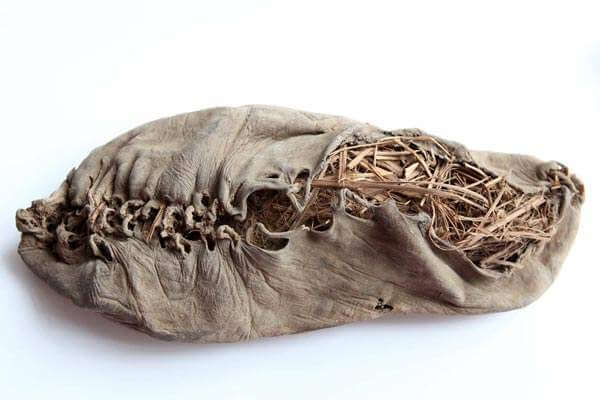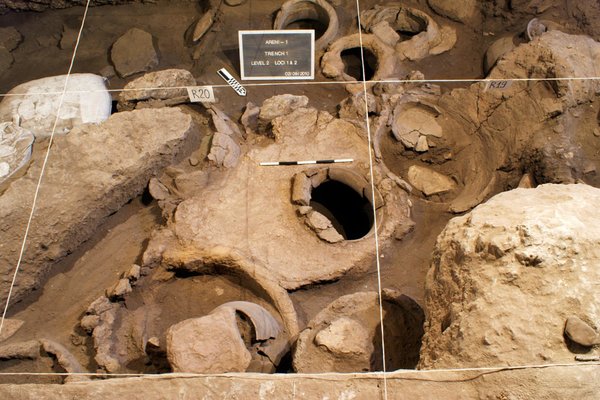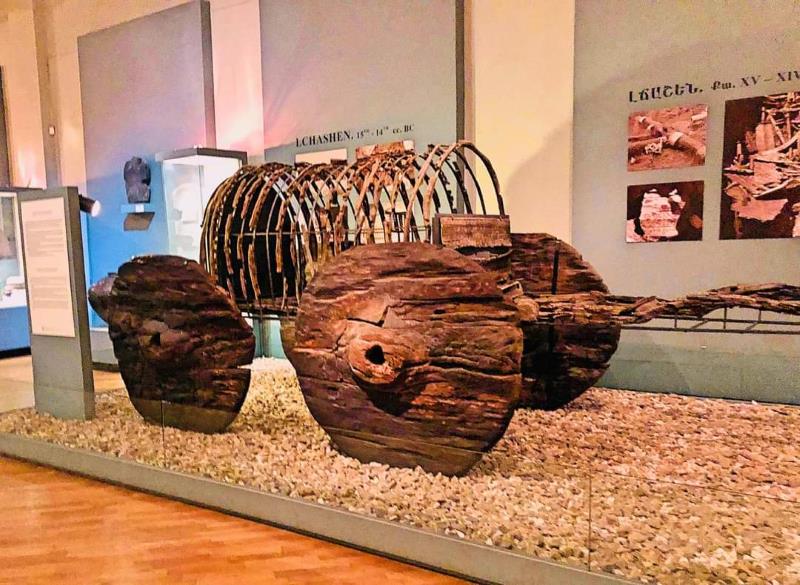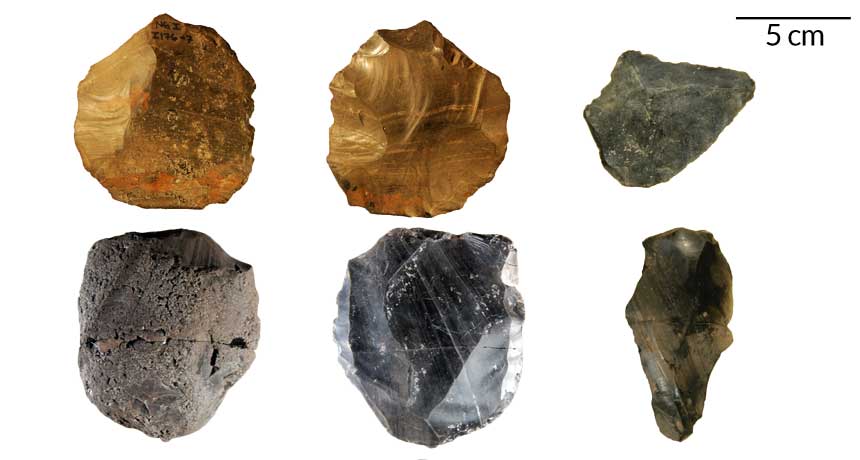
There are not many countries where you can find artifacts dating to 8000 BC. Armenia is one of them. One can find breathtaking artifacts found in Armenia to see how people lived in this territory thousands of years ago.
The History Museum of Armenia has a collection of around 400,000 archaeological, ethnographic, numismatic, and other pieces. The oldest of them dates back to the Acheulean, Mousterian, and Mesolithic periods. Imagine you can see axes, scrapers, or hand axes that were used by people in 8000 BC. They were made from local materials like basalt and obsidian.
From tools to ceramics and metalwork, you can watch the lifestyle of bygone eras. These relics serve as time capsules, preserving the essence of civilizations living here. Some artifacts found in Armenia, like leather shoes, stand out as they are considered one of the oldest in the world. Let’s see what unique pieces have been found in Armenia so far.
Oldest Shoe
One of the unique finds exhibited in Armenia’s history museum is a 5,500-year-old shoe that is considered to be the oldest leather footwear in the world. The artifact was found in Areni-1 cave in Armenia and is 1,00 years older than the Great Pyramid of Giza.
This remarkably preserved 5,500-year-old leather shoe owes its condition to the cool, dry cave environment and a seal of sheep dung. There is grass inside the shoe, but the researchers are not sure of its purpose. It was possibly serving as insulation or for maintaining the shoe’s shape. Although it’s of small size like a modern woman’s size 7, the scientists believe it could fit a man too as we are not sure of the feet size of that era.
Interestingly, the museum offers the visitors to try a replica of the shoe which is placed next to the real exhibit.
Winery

One of the oldest wineries in the world was discovered during the excavations in Areni 1 cave. Yes, it’s the same village of Areni where the oldest show was found. This discovery great a clear archaeological picture of wine production dating back 6,100 years, the scientists claimed.
The archaeologists were lucky to find a wine press for stomping grapes as well as storage vessels, drinking cups, and other equipment. Moreover, scientists analyzed the pottery to reveal the traces of pigment responsible for wine’s color.
The site is closely tied to the Areni-1 grape, a local variety still cultivated today. This archaeological discovery not only signifies the role of ancient Armenia role in the evolution of winemaking but also sheds light on the profound cultural significance of wine in the region’s ancient past.
Wagons

The halls of the Museum’s archeological collections contain such marvels as the oldest wagons dating back to 2000 BC. These well-preserved relics provide insights into the daily lives of ancient communities.
Ancient artifacts were excavated in Lchashen village near Lake Sevan. A dozen wagons, varying in design from four- to two-wheeled, with folding wheels, surprised archaeologists with their great condition. They were preserved thanks to the solid material as they are made of oakwood and favorable soil conditions. When you look at them in the museum, it’s hard to believe they are more than 4,000 years old.
Skirt
During the excavations in Areni-cave in 2010 archaeologists discovered a fragment of women’s clothing that they believe is a skirt made of reed. The skirt is about 5,900 years old and is probably the oldest reed clothing in the world.
Bakery
Archaeologists from Poland and Armenia have recently made a remarkable discovery near the town of Metsamor in the west of Armenia. The researchers unearthed powdery white substances scattered across the site, later identified as remnants of ancient wheat flour. They performed a chemical analysis on the substance to find out that it was wheat flour for baking. The team identified the ruined structure as a large 3,000-year-old bakery.
Metsamor site is a city fortress dating back to 5,000 BC. There were ancient copper smelting and bronze smelting complexes, a sanctuary, and tombs there. The excavations at Metsamor began in 1965 and are still ongoing. There is a great archeological museum with a collection of 22,000 items found during the excavation.
Stone Age Tools

Another remarkable discovery is a collection of Stone Age tools discovered at the site of the archaeological excavations Nor Gehi 1 in Armenia. The site is unique in that it was preserved between two lava flows from 200 to 400 thousand years ago.
The discovery is unique as the analysis of around 3,000 stones crushed the theory of stone toolmaking held by many scientists. They believed the tool-making technique originated in Africa and spread across the world when the population moved to other regions.
Oldest Brain
A team consisting of Armenian, American, and Irish international scientists found 3 human skulls supposedly belonging to 12-14-year-old girls in a cave overlooking the Arpa River.
2007 during the excavations, archaeologists found human skulls with one of them containing the human brain. The laboratory examination revealed that it was the oldest brain found in the world to date.
The humid climate of the given location contributed to the preservation of leukocytes and erythrocytes in the found remains.
Uncovering Ancient Armenia with Levon Travel
If you are interested in ancient artifacts, the archeology tour arranged by the Levon Travel agency is a great option. What is unique about the agency is its experience of more than 30 years in the tourism industry.
Our staff will help you with tickets, accommodation, and tickets to all museums. The agency is focused on unique tours that allow tourists to customize their journey based on specific interests and budgets.
